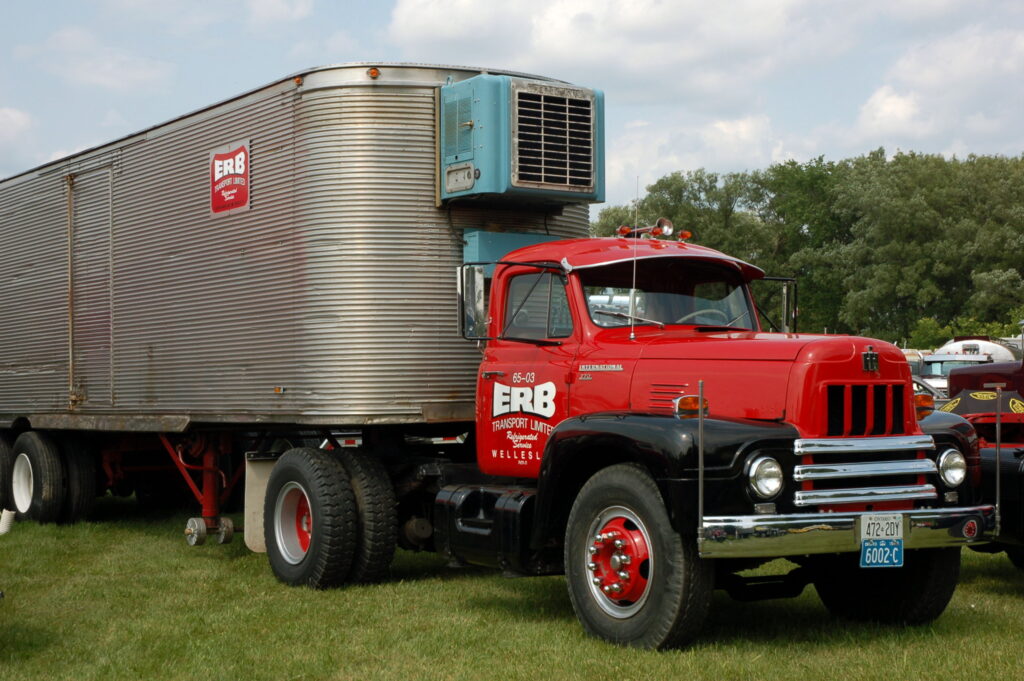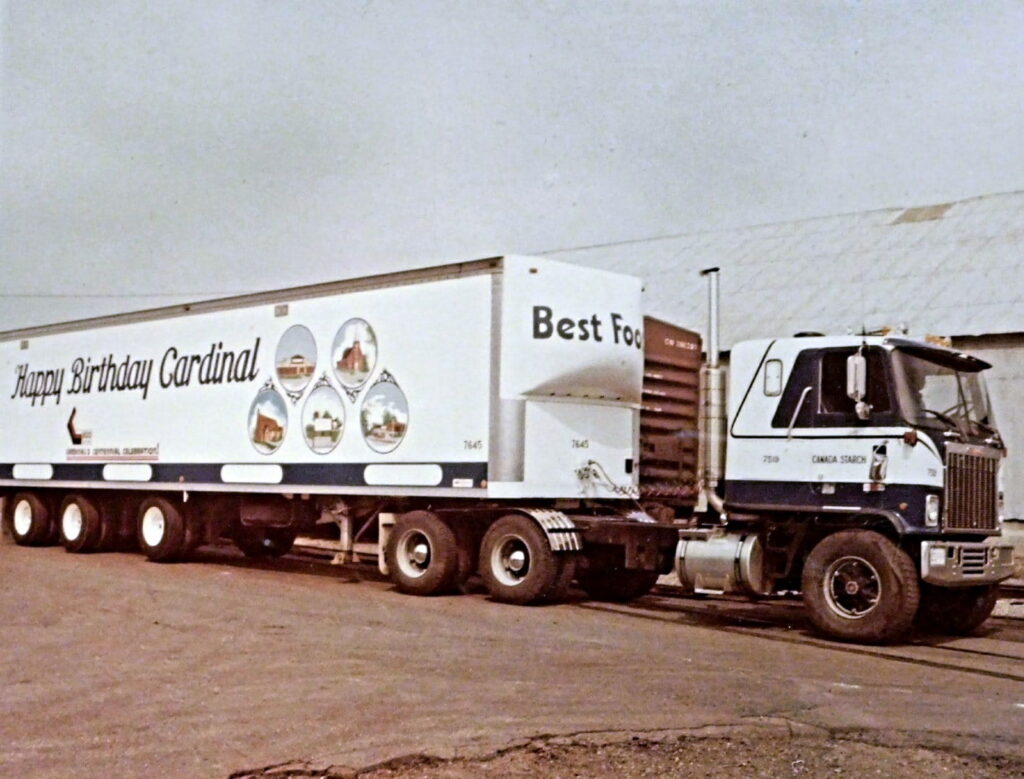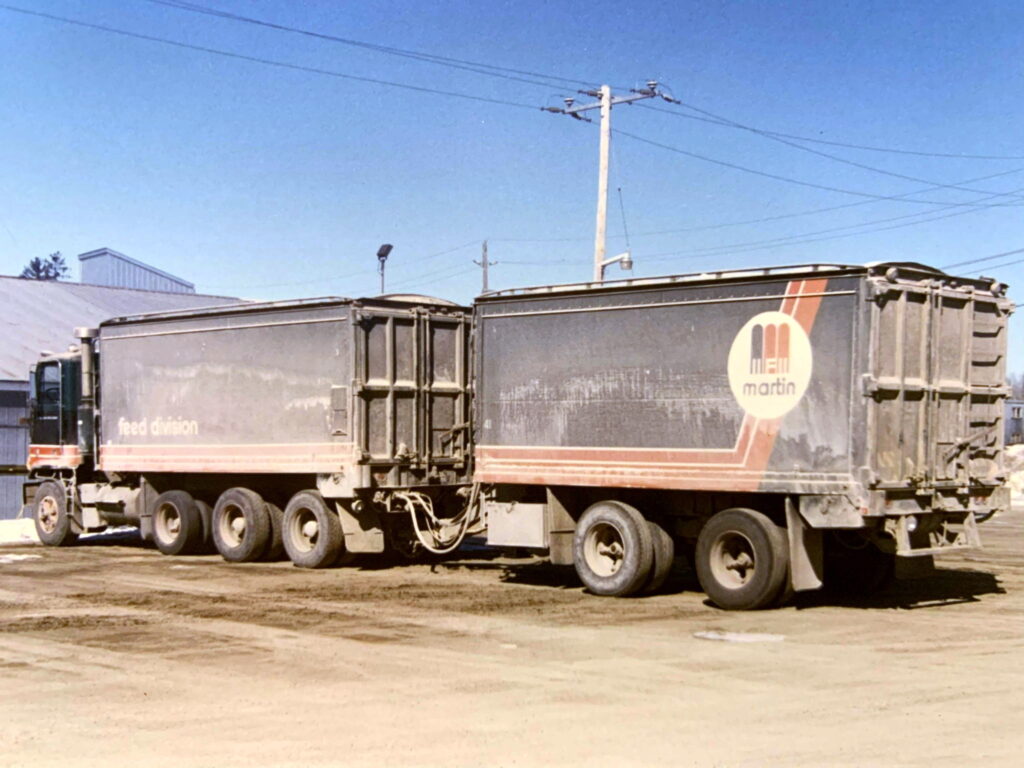How Canada’s heavy truck weights and dimensions evolved
Canada has some of the most varied weights and dimensions rules in the world. Each province and territory has its own set of rules for truck configurations.
In 1999, researchers working on the National Roadside Survey cataloged 311 distinct vehicle configurations operating on Canadian highways. Yet less than 20 years before that survey was completed, it still wasn’t possible to drive one single fully loaded tractor-trailer configuration all the way across the country and be absolutely legal in each and every jurisdiction.
The story of how those rules came to be is as compelling as it is convoluted.

There was little interprovincial trucking going in Canada on prior to the 1960s. Some regional goods movement was going on within western, central and eastern Canada, but the twains seldom met. In fact, it was twains — er, trains — that hauled most goods across provincial boundaries, so differences in truck configurations across provinces were not an issue. It wasn’t until the late 1940s that we even had a road that spanned from coast to coast.
Cross-country travel
The first cross-country car trip to be made entirely on Canadian roads (rather than on ferries and trains) took place in 1946. Alex Macfarlane and Kenneth MacGillivray drove a brand-new Chevrolet Stylemaster sedan from Louisbourg, N.S. to Victoria, B.C. in nine days. (Newfoundland was not yet part of the Dominion). Only three years earlier a stretch of gravel road between Hearst and Geraldton in northern Ontario closed the gap between east and west. And a few years before that, in 1940, a section of road called the Big Bend Highway had been completed between Golden and Revelstoke B.C.
Prior to that, the only practical way to travel between eastern and western Canada by road was through the United States.
The post-war economic boom prompted construction of the Trans-Canada Highway. Work began in 1950, and although it was officially opened by Prime Minister John Diefenbaker in 1962, construction continued until 1971. Today, it stretches some 8,000 kilometers across all 10 provinces.
It wasn’t until Trans-Canada Highway opened that anyone worried about the disparities in truck weights and dimensions regulations.

Goodbye uniformity
In the 1960s, Canadian and American truck size and weight regulations were similar. Most provinces at the time used the same bridge formula as the U.S. to determine axle spacing and allowable weight. Weight limits for a five-axle tractor-semitrailer were prescriptive and capped at 73,280 lb. (33,566 kg), with axle weights for tandem groups capped at 32,000 lb. (14,515 kg) and 42,000 lb. (19,051 kg) for tridem axles. Overall length was restricted to 65 feet (19.81 m) with a 45-foot (13.72 meter) semi-trailer.
A-train doubles were also in limited use in many parts of Canada in the 1960s.
Since railways moved most of the inter-provincial goods at the time, there was no apparent need to harmonize provincial truck weights and dimensions with neighboring jurisdictions.
Ontario’s trucking industry, on the other hand, had convinced the Department of Transport (as it was known at the time) to allow weight increases in 1960 and again in 1966 to improve productivity. In 1967, the DoT conducted a survey of truck size and weight and found significantly overloaded axles on vehicles that were close to their allowable gross weight. This situation had gone unnoticed because the province used long platform scales to weigh trucks rather than axle scales, and the axle overloads were not immediately obvious.
The survey also revealed large numbers of short but heavily loaded trucks operating in the province. It was feared that these vehicle configurations might harm bridges because of the high weight concentrations over small areas.
Another series of studies on bridges showed the original assumption was unfounded. These particular “overloaded” conditions didn’t appear to over-stress roads or bridges.
The Ontario Bridge Formula
That revelation resulted led to the Ontario Bridge Formula (OBF) in 1970 as a safe operational load limit for bridges. the OBF was viewed around the world as one of the most enlightened approaches to bridge capacity. It introduced the concept of greater allowable weight on an axle group with a greater spread. And it became the means to control axle weights in Ontario, especially when it came to the short heavy vehicles mentioned above.
The OBF provided a way to calculate safe bridge loads for groups of consecutive axles, based on the spacing between the axles. The formula allowed an increase in axle loads of about 10% over the previous rules. Tandem-axle weight limits increased to 35,000 – 39,000 lb. (15,875 – 17,690 kg) with axle spreads of 48 to 72 inches (1.22 to 1.83 meters). Tridem axles loads were increased to 44,000 – 60,000 lb. (19,958 – 27,215 kg) with spreads of 48 to 192 inches (2.44 to 4.88 meters).
The new bridge formula resulted in a corresponding increase in allowable gross weight, to a theoretical maximum of 140,000 lb. (63,503 kg). It was theoretical because it was difficult to achieve while the maximum overall length remained at 65 feet (19.81 meters).

Pandora’s trailer
But the Ontario Bridge Formula became, somewhat inadvertently, the greatest single influence on truck design in Canadian history.
The formula did not impose any controls on axle arrangement or vehicle configuration. Consequently, vehicle designers in Ontario quickly figured out how to use the formula to produce a variety of vehicle configurations that could haul the maximum allowable gross weight of 140,000 lb. (63,503 kg).
These included trailers with as many as six axles in multiple configurations. And because trailers with so many wheels under them are difficult to turn, lift axles proliferated. That led to the unanticipated consequences of drivers leaving the axles in a raised position while driving, resulting in grossly overloaded axles, suspensions and tires — and incalculable damage to pavement and roadway infrastructure.
The lift axles used at the time were not self-equalizing, and the primary suspensions on trailers were often steel springs rather than air. Drivers were expected to manually set the suspension pressure with a regulator valve to match the weight on the trailer. That process was hit or miss at the best of times.
While seen as innovative at the time, the Ontario Bridge Formula was badly flawed. There is some debate among engineers and researchers as to whether the lack of control over axle arrangement or vehicle configuration was an oversight or left open intentionally to spur innovation.
Innovative configurations
But trailer makers certainly did innovate.
The new configurations available under Ontario Bridge Formula provided Ontario industries shipping heavy or bulk commodities with a significant gain in transportation-related productivity. With freight transportation in Canada at that time primarily east–west oriented, the productivity increases in Ontario turned up the pressure for similar changes from neighboring provinces.
Other jurisdictions increased their maximum gross weight limits during the 1970s to between 110,000 and 126,000 lb. (49,900 and 57,150 kg). But unlike Ontario, the other provinces all provided prescriptive specifications for vehicle configuration, effectively limiting the growth of “Franken-trailers”.
Quebec and the Atlantic provinces quickly adopted the tri-axle semitrailer (a fixed spread tandem at the rear, with a liftable single axle). The seven-axle B-train also became common in Québec.
The western provinces decided to stick with the U.S. bridge formula for axle weights and spacing, but elected to increase overall length, making the broader use of double combinations to carry more payload. This left axle weights at a comfortable limit, but still afforded greater carrying capacity than a five-axle tractor-semitrailer.
Alberta, Saskatchewan, and Manitoba allowed double trailer combinations, and seven- or eight-axle A-trains, and seven-axle B-trains.
British Columbia introduced a limited number of configurations similar to some in Ontario but required any liftable axles to be self-steering.
What also at this time emerged were provincial alliances intended to promote regional uniformity in configurations, axle group weights and gross weights among the three prairie provinces, and separately, the four Atlantic provinces.
By the mid-1970s, two distinct fleets had emerged in Canada — eastern and western. They didn’t complement one another, and that diversity created difficulties for fleets engaged in cross-country commerce. To tackle the problem, the Roads and Transportation Association of Canada (RTAC) formed a Vehicle Weights and Dimensions Committee (which is active to this day) with a mandate to rationalize truck configurations across Canada.
- Up next, the RTAC Vehicle Weights and Dimensions Committee produces a groundbreaking Vehicle Weights and Dimensions Study, and Ontario moves to ban auxiliary axles.
Have your say
This is a moderated forum. Comments will no longer be published unless they are accompanied by a first and last name and a verifiable email address. (Today's Trucking will not publish or share the email address.) Profane language and content deemed to be libelous, racist, or threatening in nature will not be published under any circumstances.
The big change came with the Eastern Provinces Weight Harmonization study, published in August of 1995. It was very though and extremely well done. memory serving me well it became the backbone to the MOU. of uniform weights across Canada.
The result of increased weight and length laws is to put more trucks on the road because it makes trucks more competitive and moves freight off the rail and onto the road. Ontario has been too generous in raising weight and length laws. This has been done as a sop to special interest groups that a concerned only with their own bottom line. They will also be the first to complain of road damage and traffic congestion.
Really enjoyed reading the history of Canadian truck weight and configurations. Have always been intrigued by the evolution. I remember cutting my teeth with “tri-axle” trailers with the lift axle and trying to dial in the ideal pressure.
Look forward to your next installment.
Trucking overweight might not be a issue on long haul but short haul is misusing it in such cities where CVSE scales are limited such as Greater Vancouver Regional District.
Jim, could you do a – How Canada’s heavy truck log books evolved?